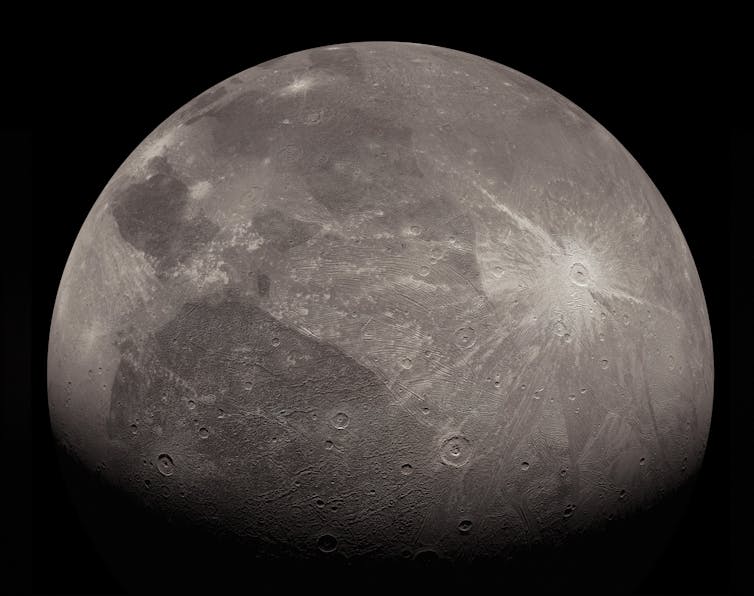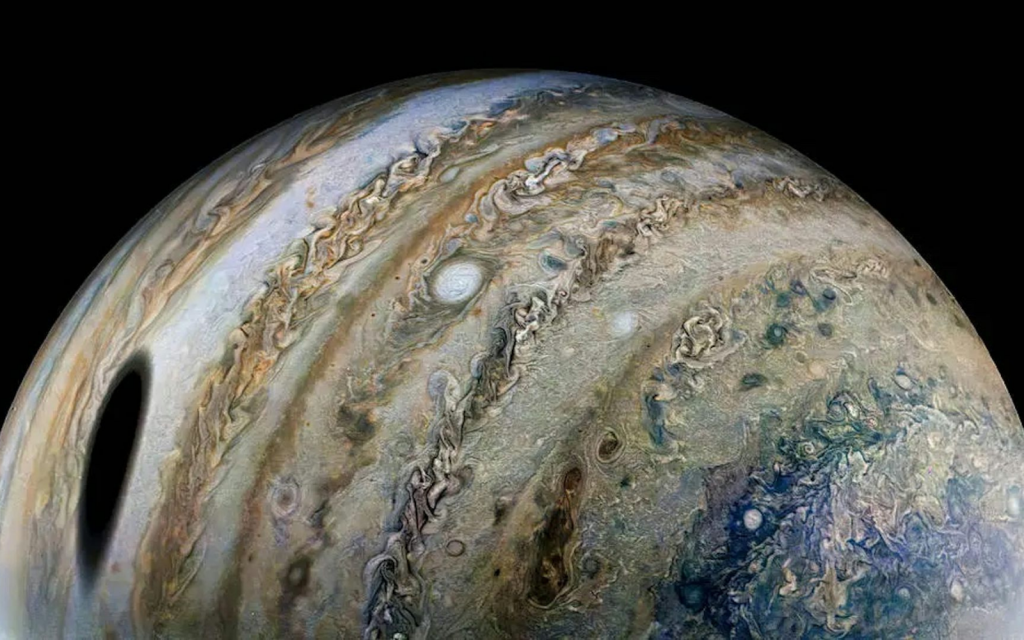A European spacecraft is about to zip by both Earth and the Moon in the space of 24 hours. In the early 2030s, the Jupiter Icy Moons Explorer (Juice) mission will be the first European probe to orbit Jupiter. But first, it needs to carry out a key manoeuvre to help set up its eventual encounter with the giant planet.
Juice will fly by the Moon at 22:16 BST on August 19. It will then zip by Earth on August 20 at 22:57 BST.
It’s now 16 months since Juice launched from Europe’s spaceport in French Guiana. Its flyby of Earth and the Moon will make Juice the first ever spacecraft to attempt a lunar-Earth gravity assist manoeuvre or Lega.
During the ambitious sequence of manoeuvres, Juice will exploit the gravitational attraction of both the Earth and the Moon to alter its trajectory and emerge at the end of the sequence on a new course that will set up a third planetary encounter with Venus in August 2025.
At Venus, Juice will undergo a slingshot manoeuvre back to Earth (twice) and finally on to Jupiter where it will enter into orbit in July 2031 to start a three-and-a-half-year mission to explore the giant planet’s icy moons, Ganymede, Callisto, and Europa – together with the volcanic satellite Io, these are known as the Galilean moons, after the Italian astronomer Galileo Galilei.
Such a scenic route offers unique opportunities for close-up views of distant worlds as well as for calibrating instruments that will be mapping out Jupiter’s environment and studying the three moons where – scientists believe – alien life could be discovered in their sub-surface oceans. Measurements indicate that Ganymede, Europa and Callisto all have liquid water beneath their outer shells and scientists believe it’s possible alien life could have developed there.
Pragmatic decision
The first Lega manoeuvre is the only way by which the spacecraft will be able to carry its 280kg of scientific instruments to Jupiter with enough propellant left to enter orbit around the planet and execute its exciting mission.
The fuel savings are so vast that gravity-assist manoeuvres have been used since the dawn of space exploration, enabling missions such as Voyager 1 and 2. These spacecraft were launched in 1977 to study the outer planets, but have since travelled into interstellar space – the space between individual stars. These spacecraft are now the furthest human-made objects from Earth and have completely revolutionised our understanding of the solar system.
What makes the Lega of August 19-20 so special is that never before has there been a need to implement two gravity assists within the short time span of a single day.
But on August 19, the Moon happens to be in the perfect spot for altering the trajectory of Juice in such a way that its subsequent Earth flyby will be as efficient as possible in catapulting the spacecraft towards Venus.
This has the advantage of ultimately reducing the total time the spacecraft would need to reach Jupiter (still no less than eight years). However, it also comes with more severe trajectory and operations requirements that will test the most skilled and experienced mission operators on Earth.
Flying by a planet or moon is no easy feat. Mission designers and spacecraft operators must meticulously plan the timing, distance and flight direction for each of the planetary encounters. The spacecraft must then follow each of these instructions on an accurate and timely basis.
This is complicated by limited knowledge of the spacecraft position and velocity in three-dimensional space (usually with an accuracy of a few kilometres and a few centimetres per second, respectively) as well as by sophisticated, yet imperfect, models of the space environment that hinder our ability to accurately predict the orbit of a spacecraft beyond a few days.

But if deviations from the nominal flight path are seen to become too large, the spacecraft engines are switched on to reduce the error as much as possible. Make a mistake or let the error grow too much, and your mission can be lost in space.
The margin for error is even smaller when flying by two planetary objects in a rapid sequence, as Juice will do. With less than 24 hours between the Moon and Earth flybys, there is very little time to react to problems. That is why mission planners at the European Space Agency (ESA) have a network of ground stations around the world that use giant telecommunications dishes to communicate with spacecraft. They constantly monitor, measure, estimate, and correct the trajectory as much as they can for two days either side of the close encounters.
Read More: The discovery of a new Earth-like planet could shed further light on what makes a planet habitable
During this time frame, international teams of spacecraft operators will be working around the clock to analyse the data beamed down by the spacecraft and keep it on course with tiny adjustments.
There are ten science instruments on the spacecraft, alongside navigation equipment, that will collect data during the Earth and Moon close encounters to verify that the trajectory is on track.
Data from Juice will be returned to Earth via two antennas on the spacecraft of different sizes. But Juice will need to point very accurately back to Earth to deliver the vital science and navigation data.
If all goes well, the manoeuvres will enable Juice’s encounter with Jupiter in 2031 and the beginning of its mission of exploration. There’s the exciting prospect of observing icy moons that are considered some of the most promising places in the solar system to look for extraterrestrial life. This could shed further light on conditions under the outer ice shell and how hospitable they might be to living organisms.
The spacecraft will also be gathering data on Jupiter itself, which is the solar system’s biggest planet and holds many secrets that are yet to be unlocked. The pay-off from the Earth-Moon flyby of August 19-20 will therefore be huge, setting up a new frontier in the exploration of planets and their moons.
- is a Lecturer in Orbital Mechanics, Surrey Space Centre, University of Surrey
- is a Reader in Onboard Data Handling, University of Surrey
- This article first appeared in The Conversation




